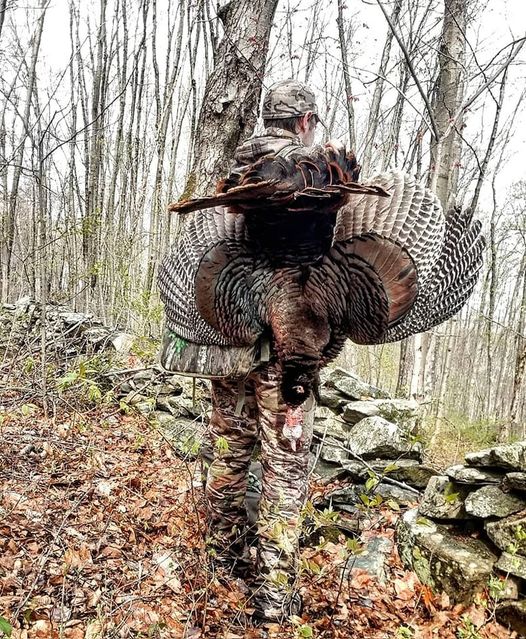
Early-season turkey hunting offers a unique challenge, as the birds haven’t been exposed to hunters for months. These gobblers may be less cautious but are still capable of detecting even the smallest mistake. To maximize your chances of bagging an early-season turkey, follow these expert strategies and bring your A-game to the field.
1. Exercise Caution from the Start
When hunting in the early season, always assume that the turkeys can see you, as their vision is far superior to yours. Avoid moving unless you are absolutely certain there is a solid barrier between you and the turkey. Sit down immediately after striking a gobbler and attempt to work the bird from that position.
2. Call Assertively to Roosted Toms
Though soft tree yelps and clucks are traditionally used to call roosted gobblers, a more aggressive approach can result in a higher success rate when hunting early-season turkeys. Switch call types until the tom responds and then cut the bird off whenever it gobbles. Learn more about different turkey calls and turkey mouth calls for beginners.
3. Scout for Acorns to Locate Turkeys
Finding last year’s acorns is a reliable way to locate turkeys or good listening spots at dawn or dusk. Turkeys are fond of wormy acorns or beech nuts, making areas with leftover mast crops from the previous fall a prime location for early-season hunting.
4. Target the Solitary Gobbler
Focus on the boss gobbler that doesn’t mingle with younger birds. These older birds are typically more predictable and have favorite spots and routines. By studying their patterns and avoiding overly aggressive tactics, you can increase your chances of bagging a trophy tom.
5. Change Tactics for Stubborn Toms
Switch calls, move positions, or go silent when dealing with uncooperative early-season gobblers. These changes can pique the bird’s interest and encourage it to come closer.
6. Always Have a Setup Plan
Before calling, ensure you have a suitable tree or brush pile nearby to set up against. This is particularly important when covering large areas, as a sudden response from a turkey can leave you with little time to find adequate cover.
7. Carry a Backup Call
Carry a variety of calls to increase your chances of success. Adding a new call type to your arsenal can make a difference on a day when your go-to calls aren’t producing results.
8. Gobble to Attract a Gobbler
During the early season, use a gobble tube or shaker call to mimic another tom. This can be an effective way to draw in dominant birds. Always exercise caution when mimicking a tom during the open season.
9. Deploy a Jake Decoy
Use a lone jake decoy or a jake and hen combination in the breeding position for early-season hunting. This setup can attract longbeards that may be hesitant to approach a strutting gobbler decoy. Learn more about turkey decoys and their proper setup.
10. Don’t Give Up on Spooked Birds
A turkey that has been “soft bumped” can often be lured back with a different angle, location, or call.
11. Focus on the Leading Bird
When dealing with a group of gobblers, pay close attention to the leader, as the rest will follow suit. Tailor
your calling to the preferences of the leading bird and ensure you remain undetected to avoid spooking the entire group.
12. Reduce Calling Volume as the Bird Approaches
With limited foliage to dampen sound, calls can travel farther in the early season. Once a gobbler is moving towards you, reduce the volume of your calls and stick to soft feeding yelps, clucks, and purrs. This will help avoid alerting the bird to your presence.
13. Utilize Natural Barriers
Strategically position yourself near natural barriers such as creeks, fences, or thick brush to guide gobblers towards your setup. These obstacles can influence the bird’s movement and increase the likelihood of a close encounter.
14. Hunt in the Afternoons
While many hunters focus their efforts on early morning hunts, don’t overlook the potential of afternoon hunting. Gobblers are often more receptive to calls in the afternoon as they search for hens that have left their nests to feed.
15. Use Terrain to Your Advantage
When setting up, consider how the terrain may impact a gobbler’s approach. Position yourself on the same elevation as the bird or on a slight incline to increase the chances of the turkey coming within shooting range.
16. Practice Patience
Early-season turkey hunting requires patience and persistence. Don’t become discouraged if a gobbler doesn’t respond immediately or seems hesitant. Sometimes, waiting quietly and allowing the bird to become curious can lead to a successful hunt.
By implementing these expert strategies and adapting your tactics to the unique challenges of early-season hunting, you can improve your chances of harvesting a gobbler and create a memorable turkey hunting experience. Don’t forget to equip yourself with the right gear, such as a turkey choke, to increase your odds of success. Good luck, and happy hunting!
[…] In the first week or two of the season, hens break away from family groups, and gobblers become increasingly vocal and active as they prepare for breeding. This is often the easiest time to harvest birds, as they are less pressured and can be easily lured to a decoy setup. For more tips on early season hunting, check out our Early Season Turkey Hunting Tips: Expert Strategies for Success. […]